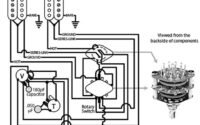The Guitar Wiring Blog – Diagrams and Tips: On-Board Effects Loop Control from The Guitar Wiring Blog
The Guitar Wiring Blog is an old established site where I picked lots of diagram when I started modifying guitars.
[ad_1]
I want to show you how to do an integrated effects loop control (Counter), as part of your guitar wiring. It’s something I am familiar with from Jerry Garcia’s ax – tiger.
The loop control allows you to turn some effects pedals on and off by switching your guitar body. It also gives you the ability to sculpt the clay in a unique way. The loop switch is located in front of the volume pot so that you can use it to control the output of the pedal chain. It means lots of new, cool tones.
Diagram:
The diagram shows the control loop and its place in all of the guitar wiring.
The main parts of this project are: DPDT On-On Mini Toggle Switches and Stereo Jack (TRS). We need a stereo jack connection to have the “send” and “return” of the guitar effects loop in one cable. It’s a very convenient way. These paths should lead directly to the integrated DPDT switch.
This switch has two positions. The first one will leave out the loop (bypass). The second connects it to the guitar wiring.
All of this system is placed in front of the volume control. It means that the common guitar vol. Pot can be used to shape the output of the pedal chain. It’s a very cool thing. Perhaps it will help you discover some new tones of your stomp boxes.
In principle, the integrated effects loop control can work in passive guitar cabling – without a buffer. With a buffer like the Garcia guitar, the output impedance is much lower, so the frequency response is “clearer” – a more transparent tone.
You can also experiment by placing it after all of the potentiometers.
[ad_2]
Source link
I am Hervé Senni, a pro musician and performer, Composer and arranger for quite some time. My main musical instrument is the electric guitar. I am also a bass player, mandolin, Ukulele player. I also invented string instruments.
Over the years, repairing and improving electric guitars that did not have to be upgraded converted me into a self-taught luthier.




